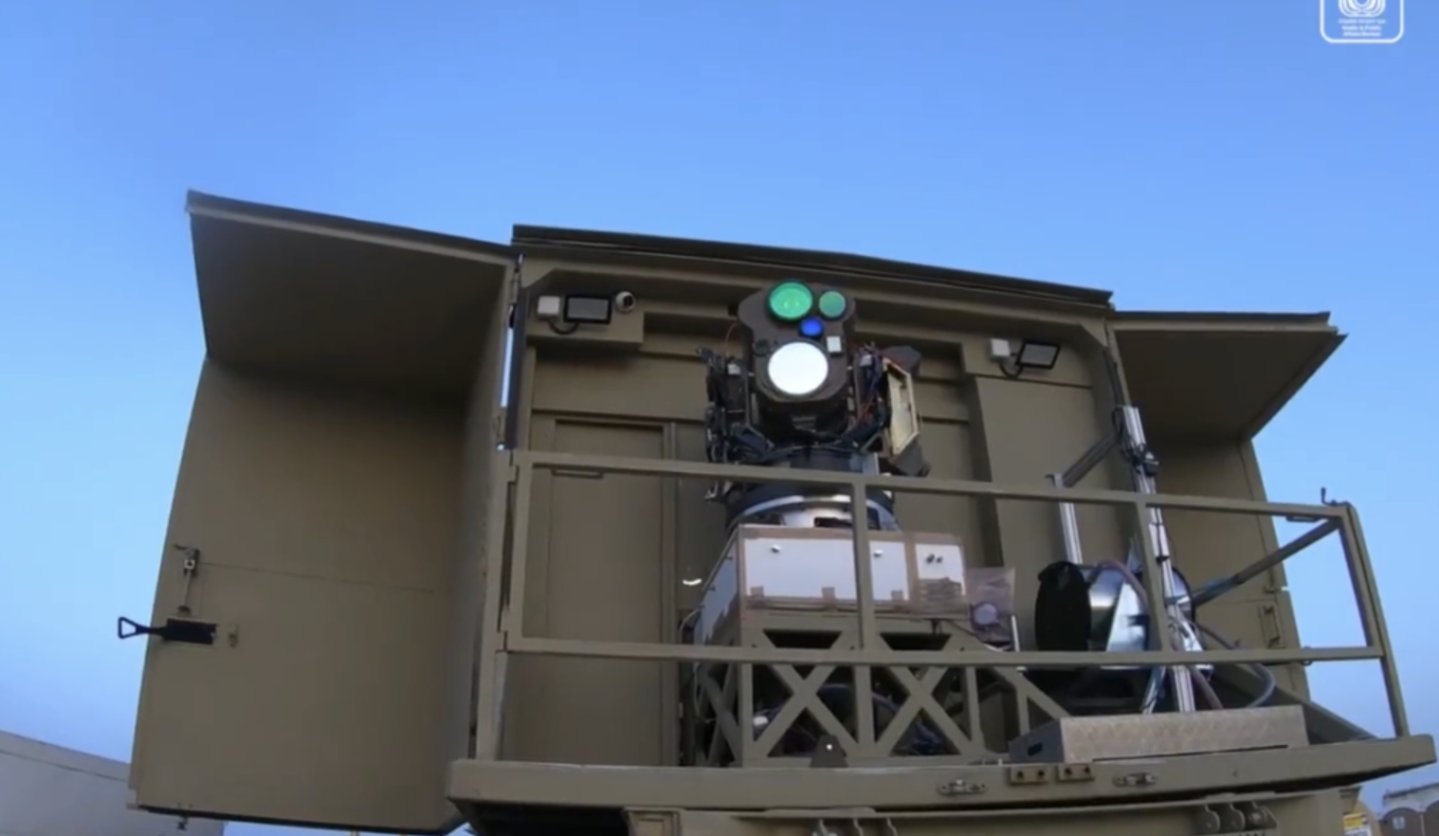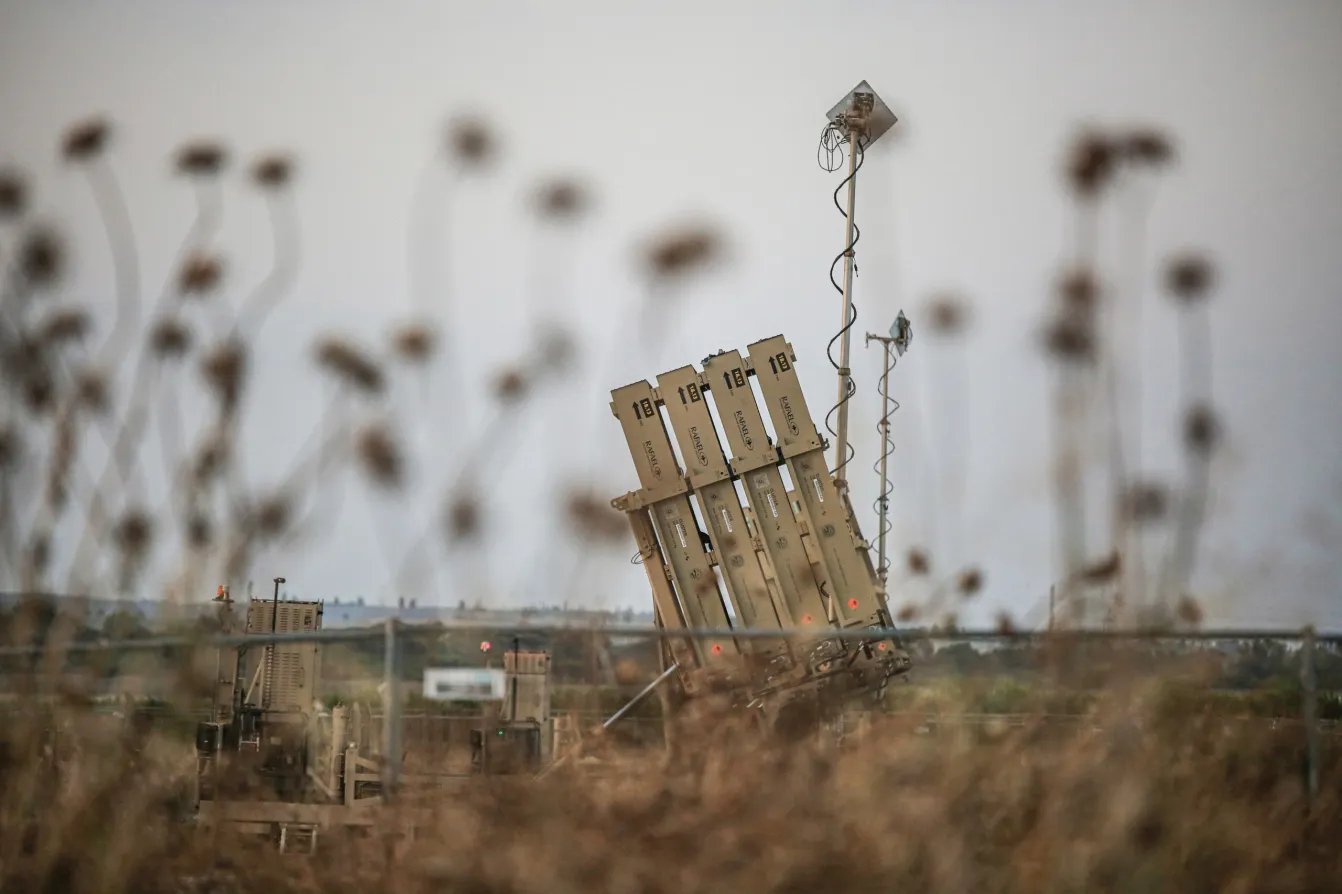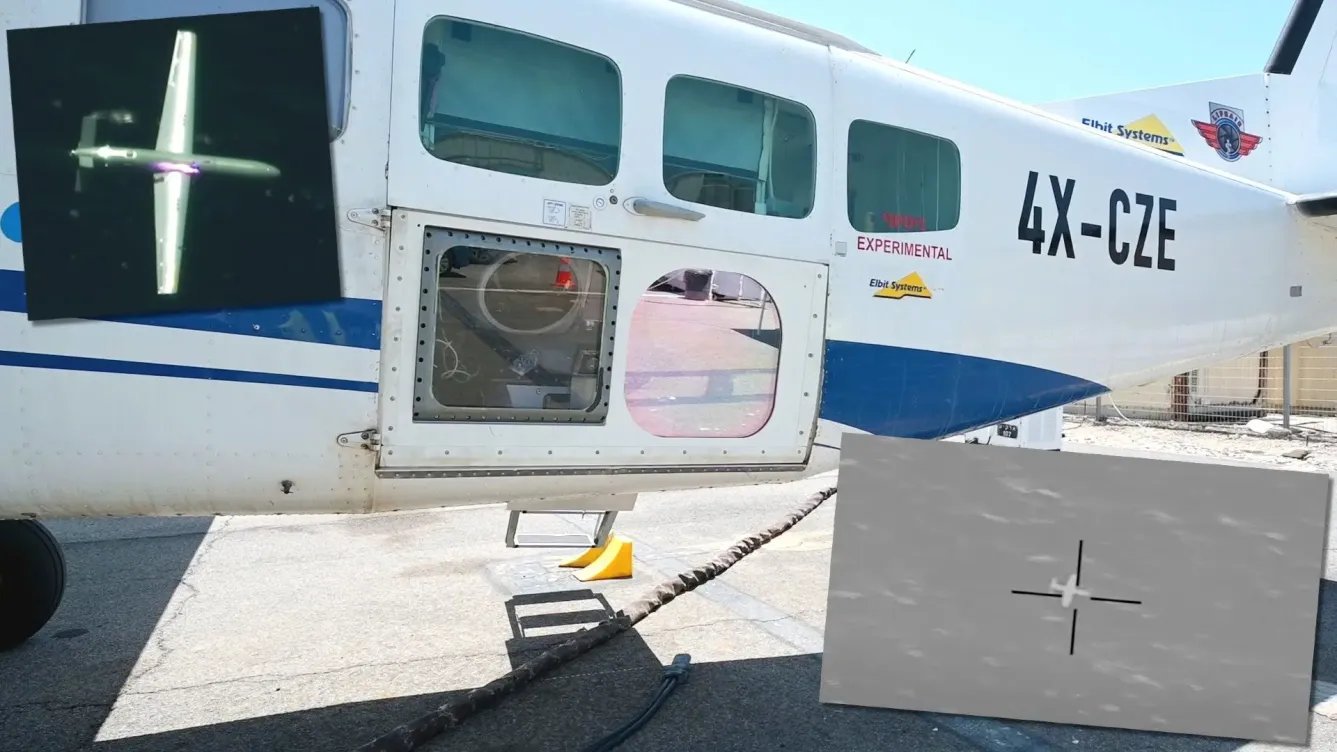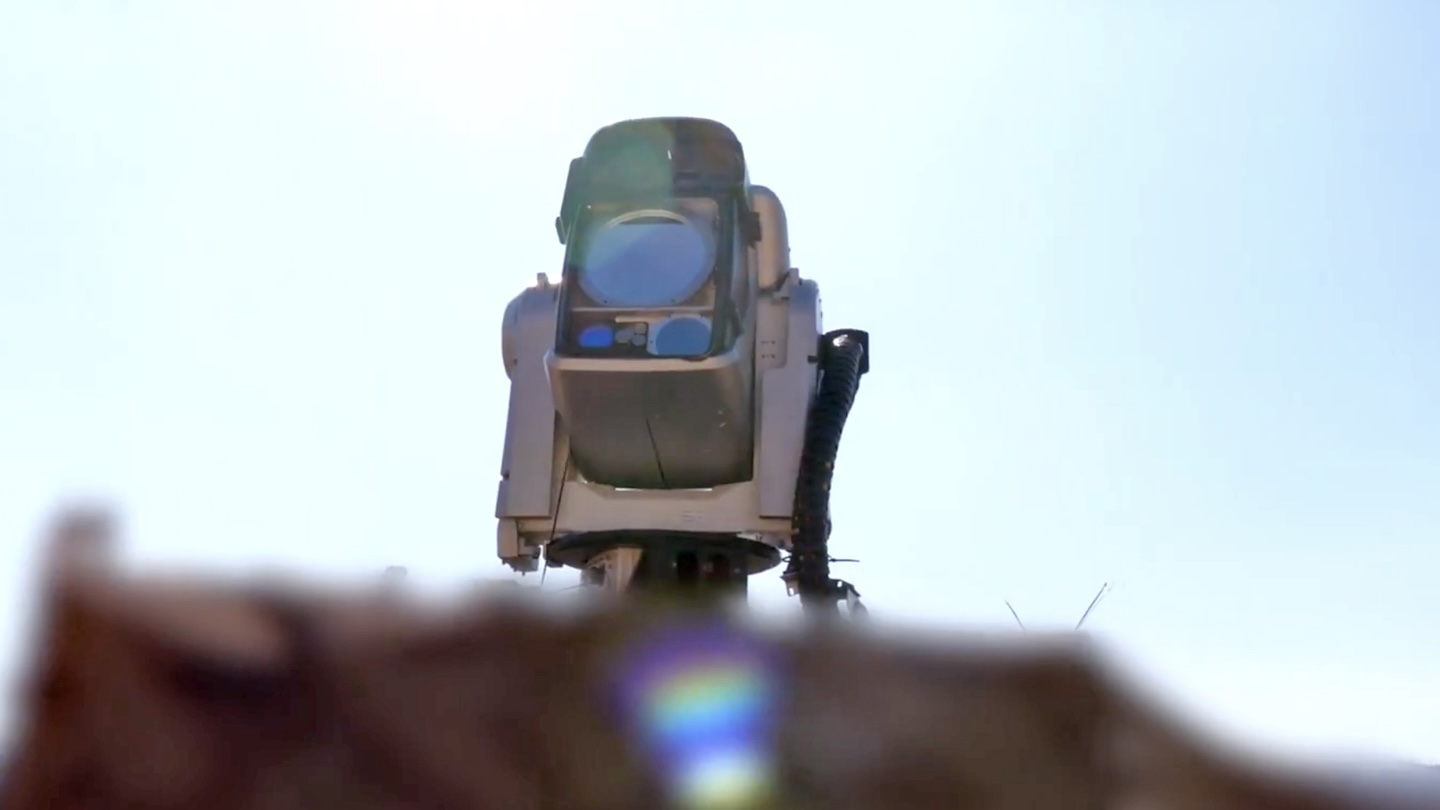Israel has used a new air defense laser to shoot down Hezbollah drones in the current conflict in the Middle East, it has been confirmed. What is described as an adapted version of the Iron Beam system made its combat debut last October, and the definitive version should be fielded by the Israel Defense Forces (IDF) later this year, joining an already formidable, layered air defense network, something you can read about in more detail here.

The use of the Iron Beam — also known by its Hebrew name Magen Or — was announced by the IDF, Israeli Air Force (IAF), and defense contractor Rafael, in a joint statement. These three organizations, it is said, “executed an accelerated development program to deploy revolutionary interception systems,” as part of an effort that also involved Israel’s Directorate of Defense Research and Development.
The crash program saw the Iron Beam fielded by the IAF Aerial Defense Array, which used prototypes of the high-power laser to successfully intercept “scores of enemy threats.”

Israeli media outlets described the Iron Beam as initially deployed as a “scaled-down version” of the definitive system, but provided no further details of how it differed or how the batteries were set up.
In its definitive form, Iron Beam is trailer-mounted and uses a directed-energy weapon to destroy targets, including rockets, mortars, and drones. In the past, reports described the system as firing “an electric 100-150 kW solid-state laser that will be capable of intercepting rockets and missiles.”
In April 2022, IDF Brig. Gen. Yaniv Rotem said that the Iron Beam had been tested at “’challenging’ ranges and timings,” according to the Times of Israel. “The use of a laser is a ‘game changer’ and the technology is simple to operate and proves to be economically viable,” Rotem added.
That particular test included the “interception of shrapnel, rockets, anti-tank missiles, and unmanned aerial vehicles, in a variety of complex scenarios,” according to the Israeli Ministry of Defense. “Israel is one of the first countries in the world to succeed in developing powerful laser technology in operational standards and demonstrate interception in an operational scenario.”
At the same time, the IDF posted a 103-second video online, showcasing what it claimed was the system locking on and destroying rockets, mortars, and a drone.

In general, developing and fielding a practical air defense laser has long been a challenge for many different countries, but for Israel, the benefits of such a system are especially obvious.
For years now, the IDF has faced the threat of large-scale, barrage-type attacks by one or more of its adversaries, including significant numbers of relatively low-cost rockets, artillery shells, and mortar rounds.
Until now, defense against attacks of this kind has been entrusted to the Iron Dome system, which was developed specifically to counter small and fast-flying targets.

Multiple accounts testify to the effectiveness of Iron Dome, although this comes at considerable expense, since it burns through a significant quantity of Tamir missile interceptors. Larger barrage attacks risk exhausting the stocks of Tamir interceptors altogether, at least in the short term.
In contrast, Iron Beam can engage many targets at a drastically reduced cost.
In April 2022, Israel’s then-Prime Minister Naftali Bennett stated that Iron Beam was able to shoot down targets at a cost of $3.50 per shot.
More recent reports put the cost of a single Iron Beam shot closer to $2.50.
Regardless, this is a huge difference compared to the roughly $50,000 price tag — which is among the lowest estimates — for a single Tamir interceptor missile.

Even before the latest conflict in the Middle East, Israel was accelerating its plans to deploy Iron Beam, which was originally expected to go online in 2024. A key driver behind this was the worry that interceptor missiles for the Iron Dome and other systems could be exhausted in a more intense, longer-lasting campaign.
Prior to the latest hostilities, it was assessed that Hezbollah had an arsenal of around 130,000 rockets, missiles, and mortar shells, while in Gaza, Hamas and the Palestinian Islamic Jihad had many thousands of additional rockets and mortar shells. At the same time, there is a growing threat from long-range one-way attack drones, many of them supplied by Iran, which have also seen significant use in the current conflict. Notably, only Hezbollah drones are mentioned as having been shot down by the interim Iron Beam in the October engagements, although there may well have been other kinds of targets, too.
At the same time, laser weapons do have limitations, including their short-term magazine depth being limited to how many successive shots they can fire before thermal loads require the system to cool down. Additionally, laser systems don’t function as well in heavy cloud cover and other inclement weather.
“We can only shoot down with a laser what we can see,” Rotem previously told the Times of Israel.
At the same time, a laser weapon of this kind is very much a point-defense weapon, with its short range meaning that multiple systems will be needed to provide coverage of a significant area. In some situations, even a single, very large military base might require multiple such systems to provide adequate defense.
With that in mind, Iron Beam is viewed as a system that’s complementary to Iron Dome and other kinetic systems, rather than a replacement.

Once again, while we don’t know in what kind of form the interim Iron Beam was fielded, reports indicate that it was successful, at least to a degree.
“The State of Israel is the first in the world to demonstrate large-scale operational laser interception capabilities,” said Dr. Daniel Gold, the head of the Directorate of Defense Research and Development, who previously helped create the Iron Dome. “Our vision for deploying laser weapons was realized during the war with tremendous technological and operational success.”
Gold also suggested that the IDF plans to field similar kinds of laser-based interception systems on aircraft and on warships.
Israel has already tested at least one high-powered airborne laser weapon, with the Ministry of Defense announcing in 2021 that it had successfully intercepted several target drones using a system of this kind. You can read more about that test here.

Intriguingly, Israeli defense company Elbit Systems responded to news of the combat use of Iron Beam with a tweet showing an illustration of an unnamed pod-based laser weapon arming an F-16 fighter. The accompanying text stated:
“At Elbit Systems, hundreds of engineers and experts are working every day on the next frontier: airborne high-power laser systems. This is our mission. This is our future.”

Notably, developing and fielding an airborne laser system has proven elusive in the United States, something that TWZ has reported on on various occasions in the past.
All things considered, laser weapons are still very much in their infancy. But the fact that Israel rushed a version of its Iron Beam into service last year indicates just how valuable this technology is considered. While laser weapons are not a cure-all for air defense needs, they clearly have a place, and the definitive version of Iron Beam will be a valuable addition to Israel’s already impressive multi-layered air defense array.
Contact the author: thomas@thewarzone.com
